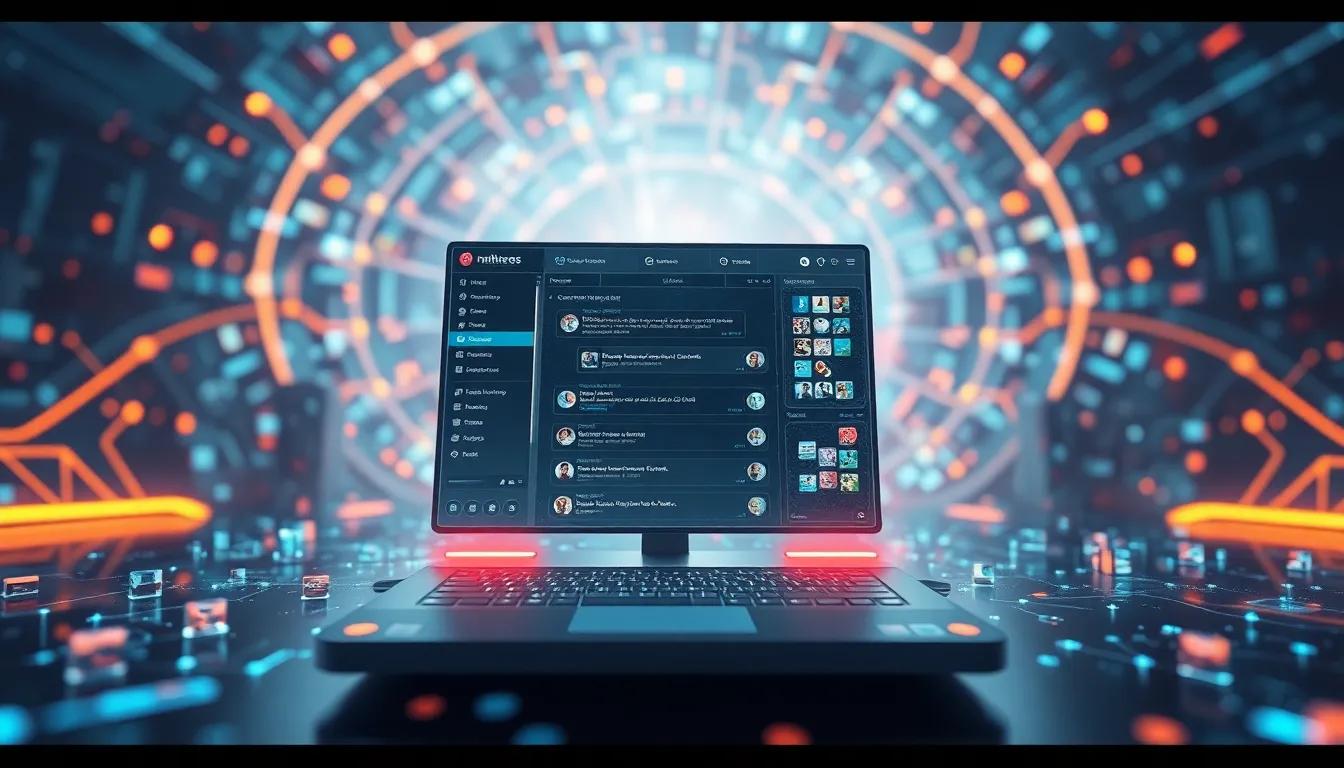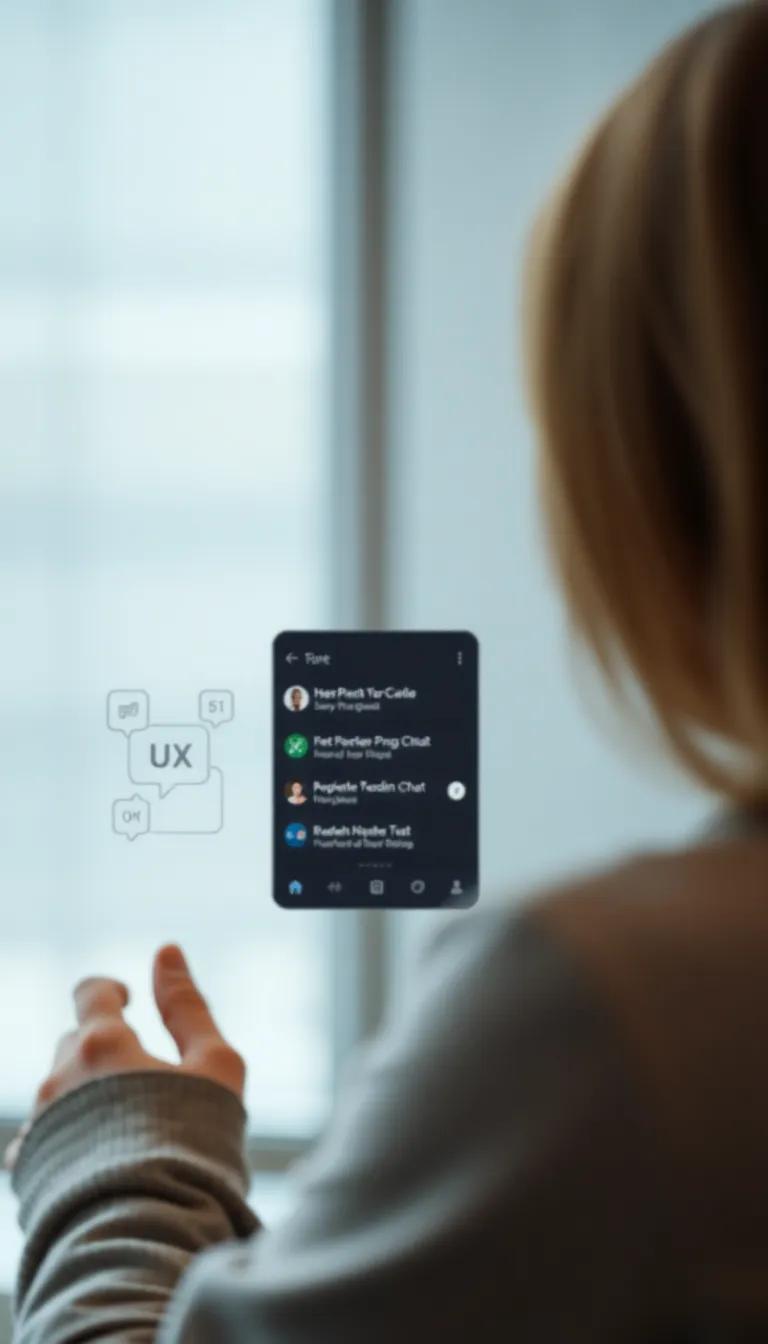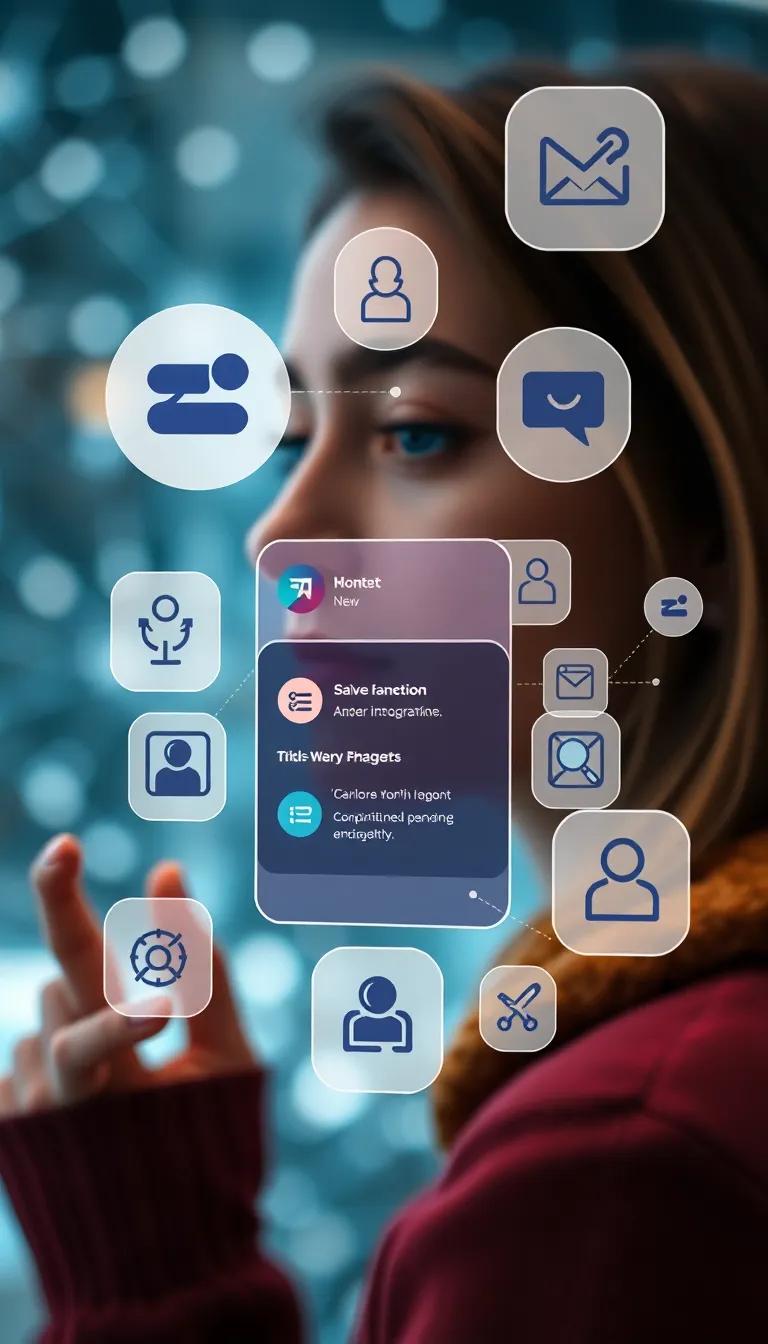Introduction
The online world is changing really fast and tools that make it easier for users to interact are always getting better. Free chat widgets for websites are leading the way in this change, giving businesses a smart way to connect with their customers. As we look ahead to what’s coming next for these tools, we should keep in mind how AI, user-friendly design, and integration options are all advancing. These changes won’t just make things better but will also help create more personalized experiences for each user.
This piece dives into how chat widgets are going to improve in terms of what they can do, how accessible they are, and how smart they can get. People are expecting more one-on-one communication and quick service, so businesses need to be quick on their feet and adapt to what’s ahead while making the most of all-in-one chat solutions. By looking at new tech and what users like, we can get a better picture of where these important tools in online services are headed.
The Rise of Chat Widgets in Digital Communication
The evolution of chat widgets has marked a significant milestone in the realm of digital communication, fundamentally altering how businesses and customers engage with one another. These interactive tools began as simple text boxes, allowing users to send messages with minimal functionality. Over the years, however, they have transformed into robust platforms that provide not only text-based interaction but also multimedia exchanges, including images, videos, and file sharing.
In the early 2000s, the first chat widgets primarily served as basic customer service tools, aimed at meeting simple queries and providing immediate responses. They were often limited in functionality, mainly staffed by human agents who could only handle a few chats simultaneously. However, this was a significant breakthrough, as it introduced real-time communication channels that transcended traditional, slower methods such as email or voice calls.
As technology advanced, so did the capabilities of chat widgets. The integration of artificial intelligence and machine learning algorithms enabled automated responses, which were designed to alleviate the workload of human representatives. This development was critical, as it allowed businesses to handle a higher volume of inquiries without the need for proportional staffing increases. These advanced features included context-aware responses, predictive text capabilities, and basic sentiment analysis, enhancing the user experience and providing more nuanced interactions.
Rich messaging has really changed the game. Now, instead of just sending texts, users can share images, documents, and links too. This has turned chat widgets from simple tools for chatting into powerful platforms for marketing, connecting with customers, and making sales. Businesses can use these chat widgets to help bring in leads and turn visitors into customers with personalized support.
Today, chat widgets are essential components of business websites, seamlessly integrating with other digital tools like customer relationship management (CRM) systems, allowing for comprehensive tracking and analysis of user interactions. With the increasing consumer expectation for immediate responses and personalized service, chat widgets have proven to be invaluable in keeping businesses competitive in the digital marketplace.
As we look toward the future, chat widgets are likely to incorporate even more advanced features, such as enhanced artificial intelligence capabilities, enabling even deeper contextual understanding and more human-like interactions. The potential for further integration with augmented reality and virtual reality suggests an exciting horizon for chat widgets, promising a new era of communication where digital and human interaction converges like never before.
Technological Innovations Driving Change AI and Machine Learning in Chat Widgets
Key Technologies Transforming User Interaction
In the rapidly changing landscape of digital communication, free website chat widgets are witnessing significant evolution fueled by advanced technologies. Among these, artificial intelligence (AI) and machine learning stand out as pivotal forces shaping their functionality. Chat widgets have transitioned from simple communication tools to sophisticated systems capable of engaging users intelligently, providing a seamless user experience that meets diverse consumer expectations.
AI has enabled chat widgets to process and analyze user data more effectively, personalizing interactions based on individual preferences and past behavior. This capability not only enhances the quality of communication but also makes the chat widget feel more intuitive and relevant. As chatbots become increasingly adept at understanding context and sentiment, users experience more meaningful exchanges that significantly improve customer satisfaction and engagement metrics.
Machine learning further amplifies this potential by allowing chat widgets to continuously learn from interactions. This iterative improvement cycle means that the more users engage with the system, the better the widget becomes at predicting their needs and providing timely solutions. Chatbots can now handle complex queries and solve problems that previously required human intervention, enabling companies to enhance efficiency while reducing operational costs.
Responsive Designs and Enhancements in User Interactions
Responsive designs are another key trend influencing chat widget functionality. With the increasing prevalence of mobile browsing, ensuring that chat widgets are compatible with various devices is essential. Modern chat widgets employ responsive design practices, ensuring that the user experience remains consistent, irrespective of the platform. This adaptability allows businesses to cater to a broader audience and ensure that users are always connected, irrespective of how they access the digital environment.
New tech is jazzing up chat widgets with better visuals and interactive features. Adding stuff like images, videos, and buttons makes it way more fun for users. These cool new designs don’t just look good; they also make it easier to use and help things flow better in conversations.
As these technologies evolve, organizations must stay abreast of these developments, harnessing them to refine their communication strategies while setting themselves apart in an increasingly competitive marketplace. The future of free website chat widgets holds untapped potential, driven by innovation, user-centered design, and ongoing technological advancement.
User Experience The Heart of Chat Widget Evolution
Designing for Interaction and Engagement
User experience (UX) stands as a pivotal element driving the evolution of chat widgets. This focus on UX not only enhances user satisfaction but also serves as a key differentiator in a crowded marketplace. As developers strive to create chat widgets that resonate with users, the emphasis on intuitive design, seamless interaction, and emotional engagement has never been more pronounced.
Incorporating user feedback into the design process has emerged as a fundamental practice. By actively soliciting input from users during development, designers can gain invaluable insights into what aspects of a chat widget function well and which areas require improvement. This iterative process ensures that each subsequent version effectively addresses user pain points, enhancing both usability and accessibility. Mobile responsiveness, a crucial factor, remains a primary focus. Users expect chat widgets to function flawlessly across devices, and any friction in their experience can lead to frustration and disengagement.
You really can’t ignore how important personalization is. In the future, chat widgets are probably going to get smarter with fancy algorithms that look at how you act and what you like. They’ll give you replies and greetings that feel just right for you and even start a chat if you hang around on a page for a bit too long. This kind of stuff can really make users feel happier and want to stick around. Plus, it helps each person feel valued and connected to the brand, which is pretty awesome.
Navigating Expectations in Digital Communication
User expectations play a crucial role in shaping the future of chat widget design. The growing familiarity with AI-driven chatbots has led users to anticipate quick and accurate responses. Consequently, chat widgets must integrate AI solutions adeptly, ensuring that the technology complements rather than compromises the human aspect of interaction. Sophisticated natural language processing (NLP) capabilities are essential for enabling chat widgets to understand and respond accurately to user queries, minimizing miscommunication.
When it comes to trust from users, being open in how you communicate is super important. With more people worried about privacy these days, chat widgets should have easy-to-understand privacy settings and clear policies about data use. Allowing users to have control over their info not only helps build trust but also leads to better conversations in the chat.
As the landscape evolves, a holistic approach that prioritizes user experience will define the next generation of chat widgets, creating platforms that not only facilitate communication but also enhance the overall digital experience.
Integration with Other Digital Tools Enhancing Chat Widgets in the Future
Synergy with Existing Platforms
As we look toward the next era of chat widgets, integration with other digital tools emerges as a defining feature that can significantly enhance both functionality and user experience. By creating seamless connections with Customer Relationship Management (CRM) systems, help desk software, and e-commerce platforms, chat widgets can transform into robust multi-functional tools. For instance, integrating a chat widget with a CRM allows customer service representatives to access valuable client information in real-time, enabling personalized interactions that enhance user satisfaction.
When you connect with help desk software it makes handling tickets much easier. If someone starts a chat in the widget it can automatically create a support ticket if needed. This way no question gets left hanging and users can switch between support options without any hassle.
Cross-Platform Integration
The ability to connect chat widgets with social media channels like Facebook Messenger, WhatsApp, and Twitter can also enhance user engagement. By allowing users to communicate through their platform of choice, businesses reach diverse audiences and improve interaction rates. For instance, if a user initiates a conversation on a website and later wants to continue it via Messenger, integrated chat systems can retain the conversation history and context, thereby enriching the overall user experience.
This cross-platform functionality also extends to analytics tools that track user interaction data. By integrating chat widgets with analytics platforms, companies can gain insights into user behavior, preferences, and challenges. These insights can inform marketing strategies and product development, creating a more responsive business environment.
You know what’s cool? Mixing chat widgets with AI tools can really boost how users handle things on their own. Like, chatbots can fetch info from different apps and give you things like order updates or stock levels right in the chat. This means you get answers fast without waiting around and it also lightens the load for the human agents.
Through thoughtful integration, free website chat widgets can evolve into comprehensive communication hubs. Such advancements not only prioritize user experience but also align closely with the technological innovations shaping the digital landscape. As we anticipate the future developments of these chat widgets, the emphasis on integration will undeniably carve out a new niche in how brands interact with their customers.
Looking Ahead The Future of Chat Widgets in Digital Communication
Future Trends Defining The Next Era Of Free Website Chat Widgets
As organizations strive to enhance user experience and foster better communication, the future landscape of chat widgets is poised to undergo significant transformations. Emerging technological advancements, complemented by shifting social dynamics and economic considerations, will shape these tools to provide a more seamless interaction between businesses and their audiences.
One notable trend is the integration of artificial intelligence and machine learning algorithms. These technologies are anticipated to elevate chat widgets by enabling more sophisticated interactions and personalized responses based on user behavior and preferences. As these systems become adept at understanding natural language and emotional cues, they will improve the quality of conversations, offering users tailored assistance that addresses their unique concerns.
The growth of mobile communication is definitely going to change how chat widgets look and work. Since more people are chatting with businesses on their phones, these widgets have to be easy to use on mobile devices. This means chatbots should be responsive and give info in a clear and helpful way, making it easier for users to connect no matter what device they’re on.
Social behavior trends will also have a profound impact. The growing emphasis on transparency and authenticity in digital communications means businesses will need to develop chat widgets that foster open dialogues and build trust with users. Innovations such as video chat integration and voice recognition are expected to play a significant role, allowing for a richer interaction that resonates more closely with users’ expectations for personalized communication.
On the economic front, the proliferation of free chat widget options will likely disrupt traditional pricing models. Businesses will increasingly seek cost-effective solutions that offer high-value features, compelling developers to introduce innovative functionalities while keeping platforms user-friendly. This competitive market environment may drive enhanced collaboration between chat widget providers and businesses, resulting in more customizable solutions tailored to specific industries.
Looking ahead, chat widgets are going to change a lot thanks to new tech, shifting social trends, and economic changes. As these tools get better at fitting what users want, they’re going to be key for businesses in how they handle digital communication.
Conclusions
So looking ahead the trends for website chat widgets are showing a big change not just in how they work but also in making the whole user experience better. With new tech like AI and machine learning we’re going to see chats that feel more personal which helps keep customers engaged and coming back. Companies that jump on these changes will definitely have the edge when it comes to connecting with their audience.
As we move forward blending natural language processing with smart analytics will change how businesses talk to customers online. These tools won’t just be important for customer service they’ll be key in shaping branding and overall communication strategies. Embracing these upcoming trends is going to be super important for success in the busy digital world ahead.
















